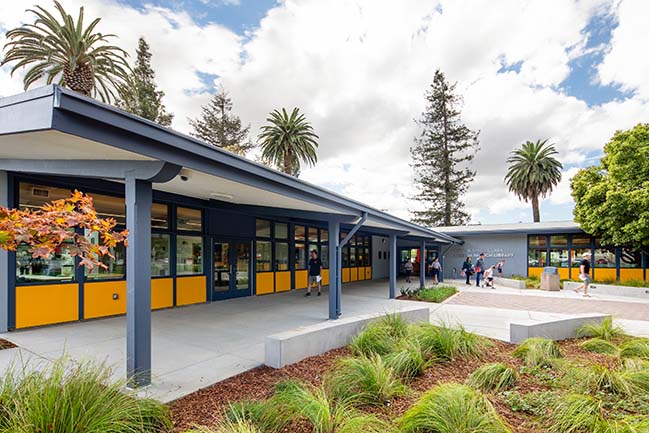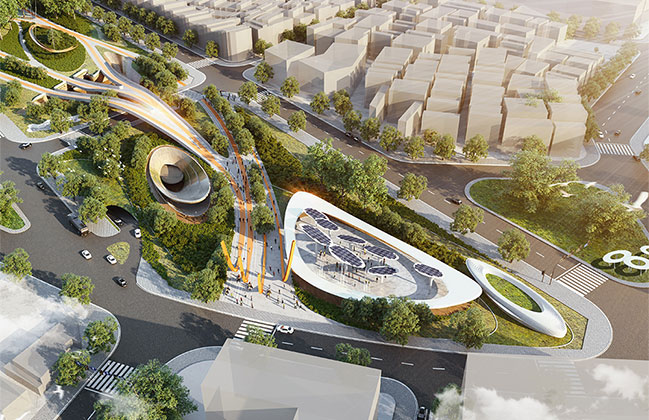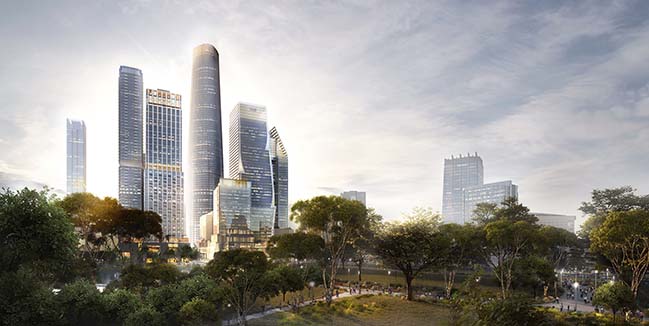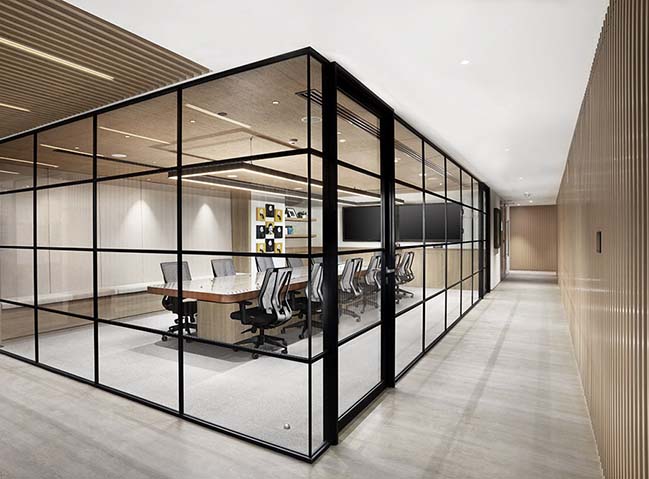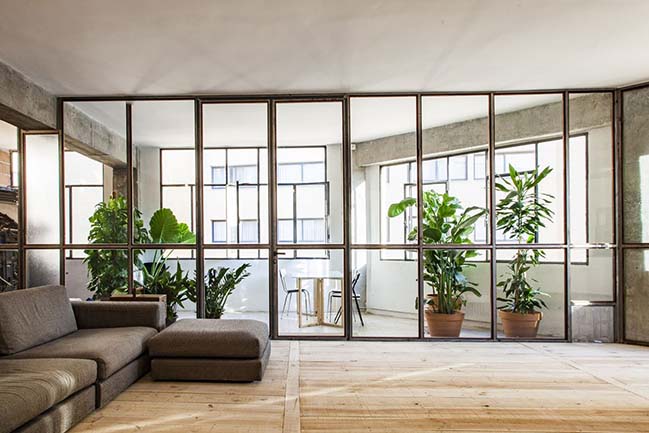08 / 08
2019
Mecanoo's - The Place Taipei - brands itself as a hotel that creates a unique visitor experienced that embodies the specific identity of each place.
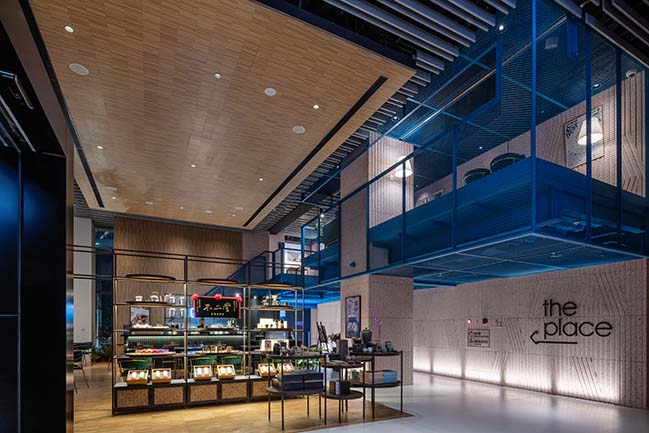
Architect: Mecanoo
Client: Royal Management Consultant Co., Ltd.
Location: Taipei, Taiwan
Year: 2019
Size: 6,600 sq.m.
Photography: Ethan Lee
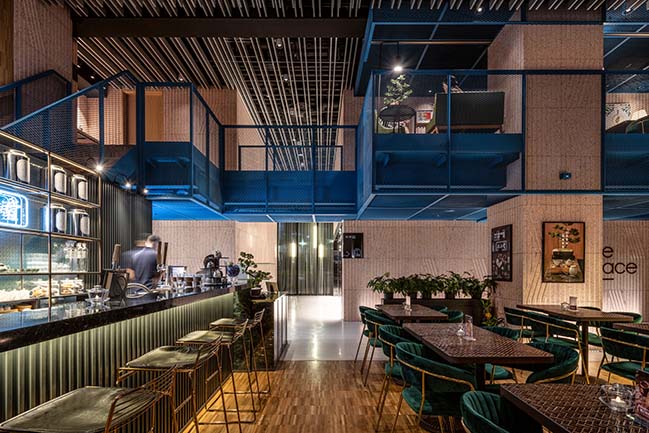
From the architect: The Place, like its name, brands itself as a hotel that creates a unique visitor experienced that embodies the specific identity of each place. This specificity of place is central to Mecanoo’s “People, Place, Purpose” design philosophy, which emphasizes users, a holistic understanding of the social, historical and physical context, and a response to current and future building functions. For each assignment, our goal is to seek out the secret of the location to create a unique design that strengthens the distinct identity of the context.
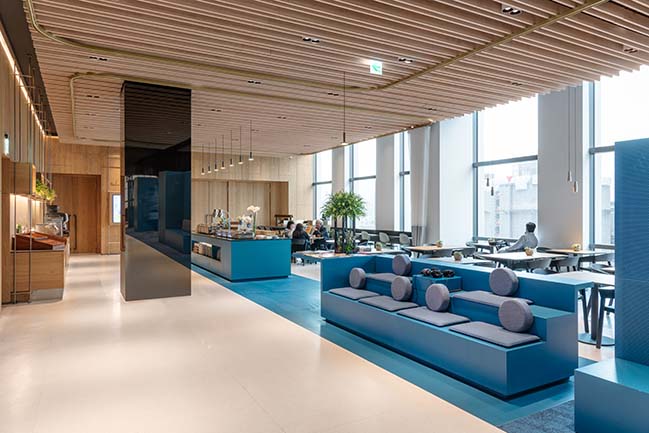
In keeping with this design philosophy, Mecanoo’s interiors for The Place hotels in other cities all embody a unique sense of place: The Place in Tainan reinterprets the historic city’s rich streetscape; in Yilan, the hotel is located in the National Center for Traditional Arts and draws its inspiration from local craftsmanship. By contrasting old and new, mixing of west and east, the hotel becomes a contemporary interpretation of a traditional art form.
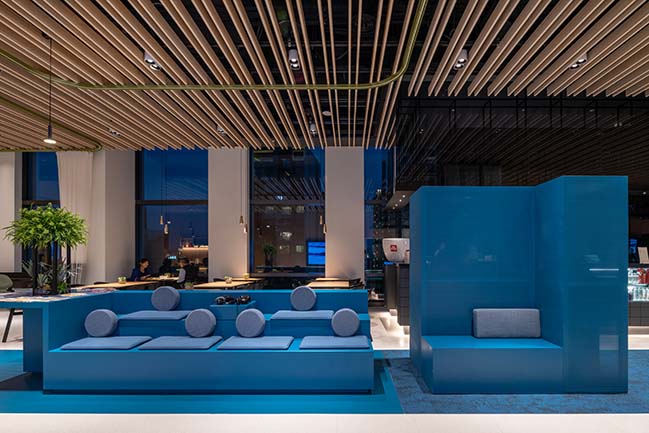
For the interior design of the The Place hotel in Taipei’s Nangang district, Mecanoo drew inspiration from the local tea production tradition. The tea industry has contributed to shaping the area’s landscape and history, and is part of what makes Nangang unique. More recently, since shifting from a manufacturing economy to the knowledge-based economy in the late 20th C, Nangang has developed as a sustainable regional centre for conferences and trade shows. The district includes a software park and a High Speed Rail connection to the airport. Mecanoo’s design for the hotel interior combines old and new, tying together these two aspects of Nangang’s distinct identity.
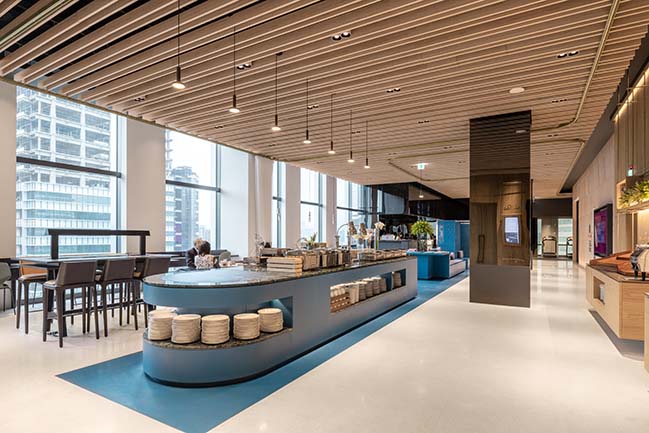
The Nangang district: Pouchong tea
Historically, one of the Nangang district’s most important export products has been Pouchong tea. It is harvested from terraced tea plantations, which have become a popular touristic destination with the Nangang Tea Processing Demonstration Centre. It is a type of Oolong tea with a bright yellow colour. The tea was dried, fermented, packaged and transported and distributed worldwide.
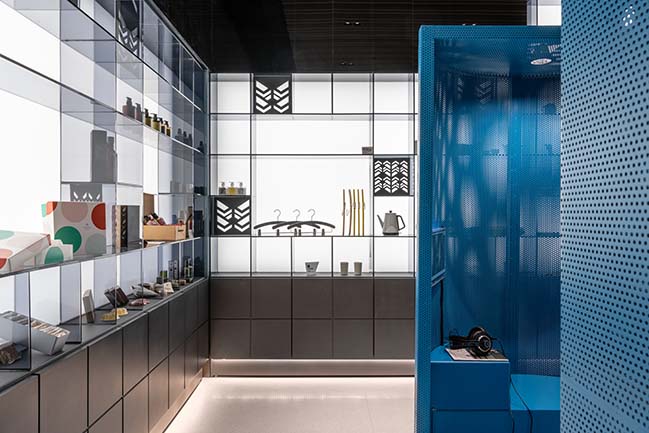
Hotel public area: tea house (socialising)
The local Pouchong tea became the springboard for Mecanoo’s design of The Place in Nangan. The hotel is located on the 10th to 20th floors of a mixed-use building. Visitors pass through a ground-floor lobby and arrive at the 10th floor check-in / lounge / dining area, which functions like a Taiwanese tea house. Traditionally, these tea houses are social spaces, not unlike European cafes and bars. Likewise, The Place’s welcoming lobby allows guests to check in, work, rest, dine and socialise. These services are “highlighted” in a contemporary bright blue linear element, creating a strong contrast with the warm oak walls. This element contains a buffet counter, flexible stepped seating, and several one-step self-check-in points. As in a tea house, hospitality and socialisation are central.
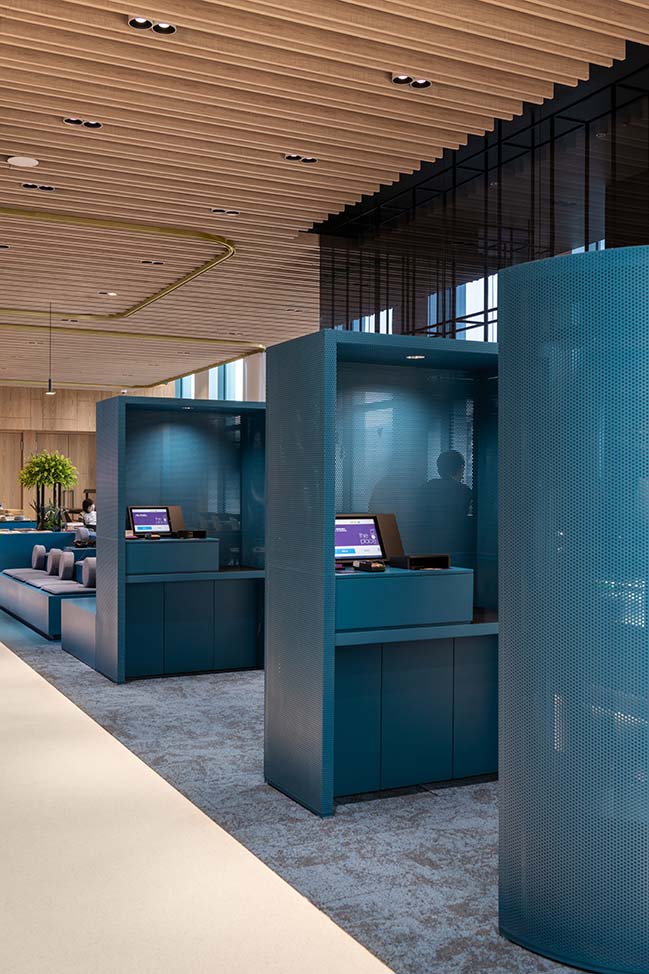
Social spaces should have an energetic buzz without becoming overcrowded; depending on the time of day, the size of the lobby can be flexibly adjusted with a system of curtains. Only half of the space is open in the late evenings; when the hotel is fully booked, the lobby can extend to the adjacent multipurpose room. Curtains also add a rich experiential layer to the project; in the 10th floor dining area, overlapping layers of fabric with different degrees of transparency selectively reveal views. In the conference room, a historic photograph of boats transporting tea is reinterpreted for the region’s technology-focussed development. The ca. 60m x 4m printed image is a “digitalised history” – what appears as a historic image from a distance becomes a pattern of 1s and 0s when seen up close.
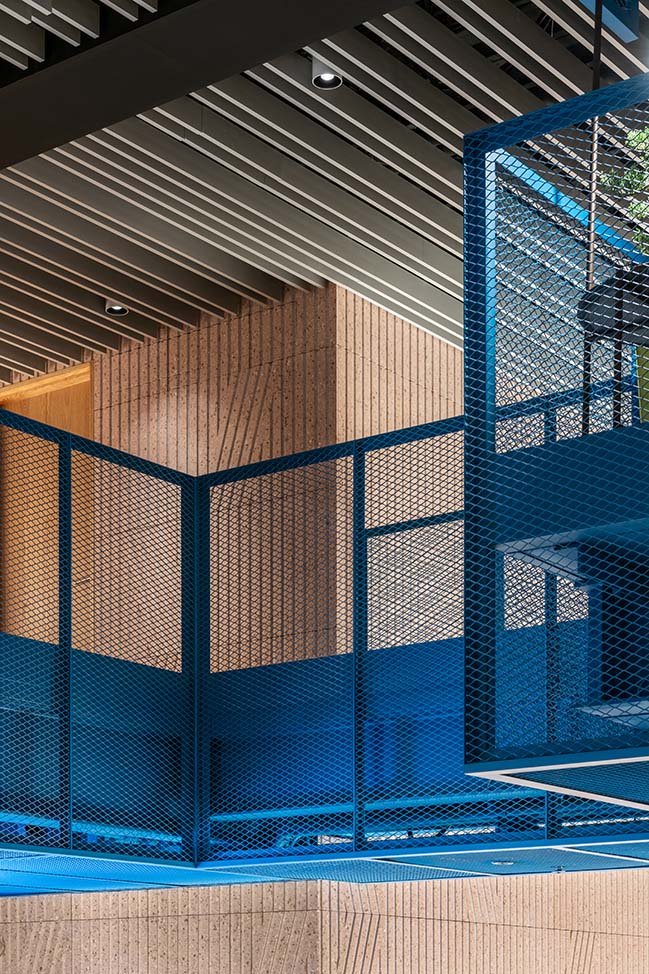
Hotels rooms: tea fields (production)
While the lobby is a tea house, the hotel corridors and rooms embody the tea production process. The corridor carpet pattern evokes the terraced tea plantation landscape. Stepping into the rooms, the chevron wood floor pattern echoes the woven bamboo baskets for drying tea leaves. The colour palette is natural wood with Pouchong tea-coloured accents.
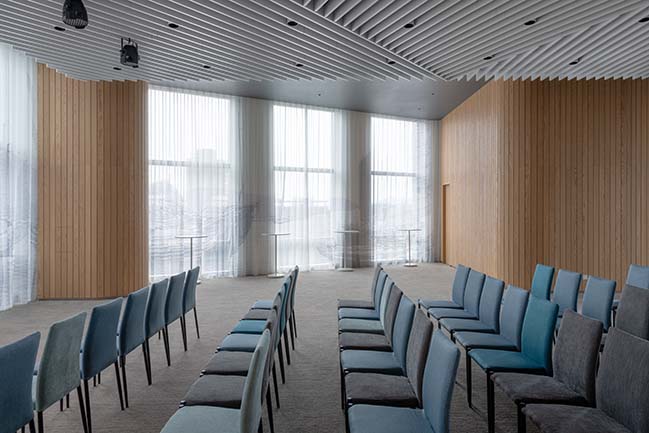
The compact hotels rooms vary between 20 m2 and 43 m2. They are flexible and efficient. The Place is primarily a business hotel, with guests coming for trade fairs and shows. Storage space and computer working stations are therefore conveniently provided. There are seven types of rooms, each with a compact layout and designed to appear as spacious as possible. To this end, fixed elements are integrated into one box: the bathroom, wardrobe, a place for luggage, a mini bar and a standing workplace. Others are mobile elements: rotating round table, work from bed or chair. Above the standing workplace is a pegboard that provides an assortment of “working tools” for the guests’ stay: chargers, stationary, speakers, tea, cups, even airplants.

Programme:
1F: entrance lobby / tea shop
1MF: tea shop seating area
10F: reception/ restaurant / two conference rooms / gym
11-20F: 179 guestrooms (5 room types + 2 suite types)
Public area aprox 600 m2
Guestroom floors aprox. 6000m2
[ VIEW MORE ARCHITECTURE IN TAIWAN ]
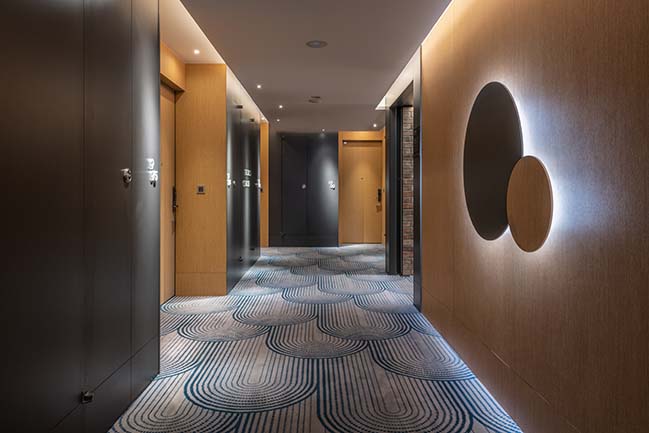
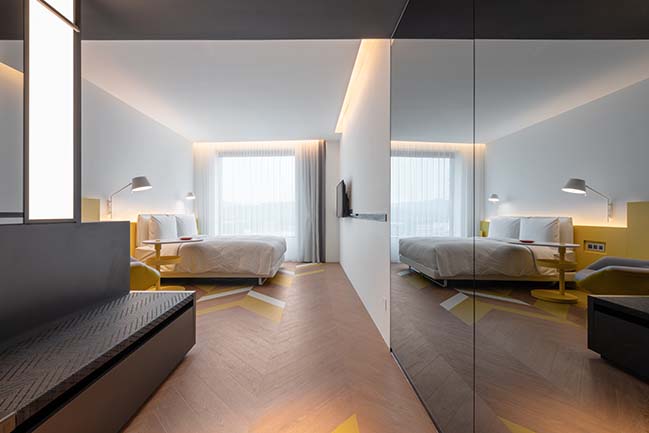
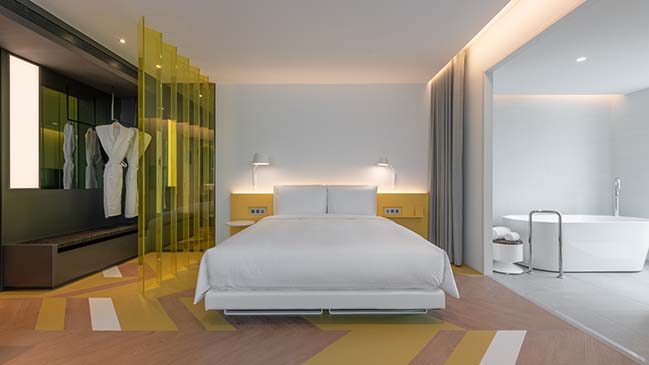
YOU MAY ALSO LIKE: Taiwan National Archive by mecanoo
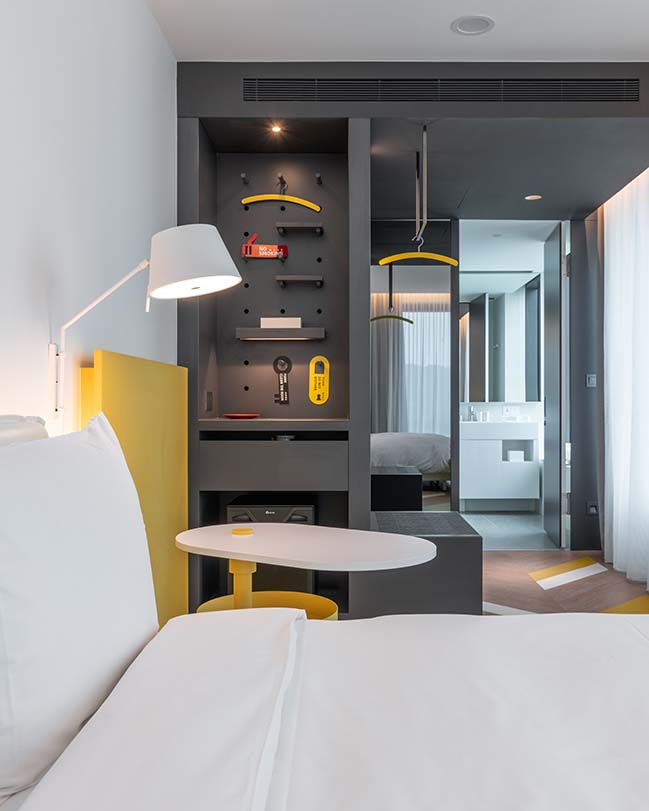
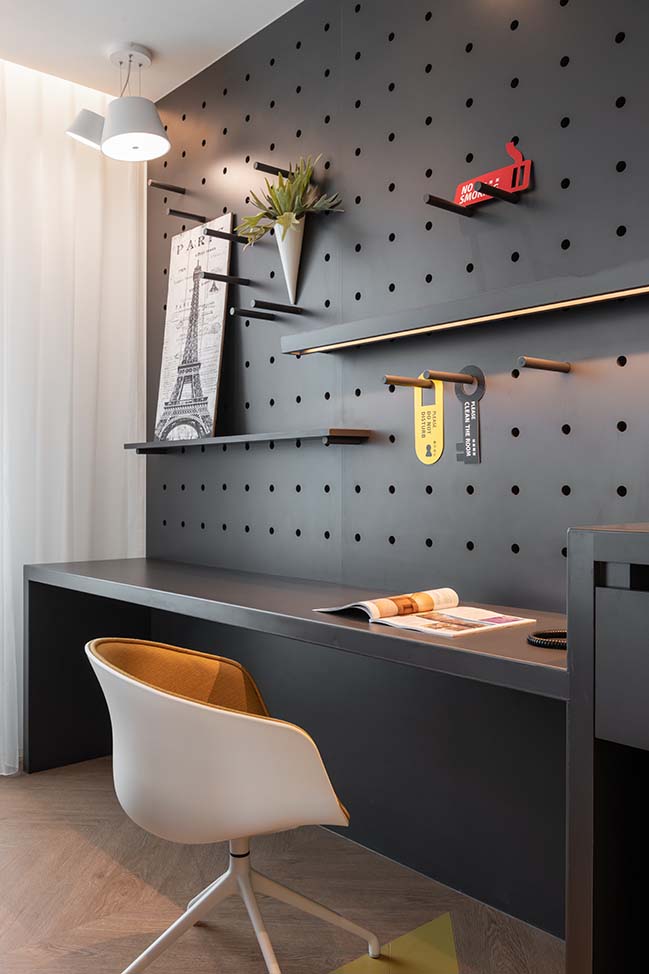
YOU MAY ALSO LIIKE:
> Kaohsiung Social Housing by Mecanoo
> Taichung Green Corridor by Mecanoo
The Place Taipei by Mecanoo
08 / 08 / 2019 Mecanoo's - The Place Taipei - brands itself as a hotel that creates a unique visitor experienced that embodies the specific identity of each place...
You might also like:
Recommended post: Industrial Loft in Barcelona by Habitan Architecture
